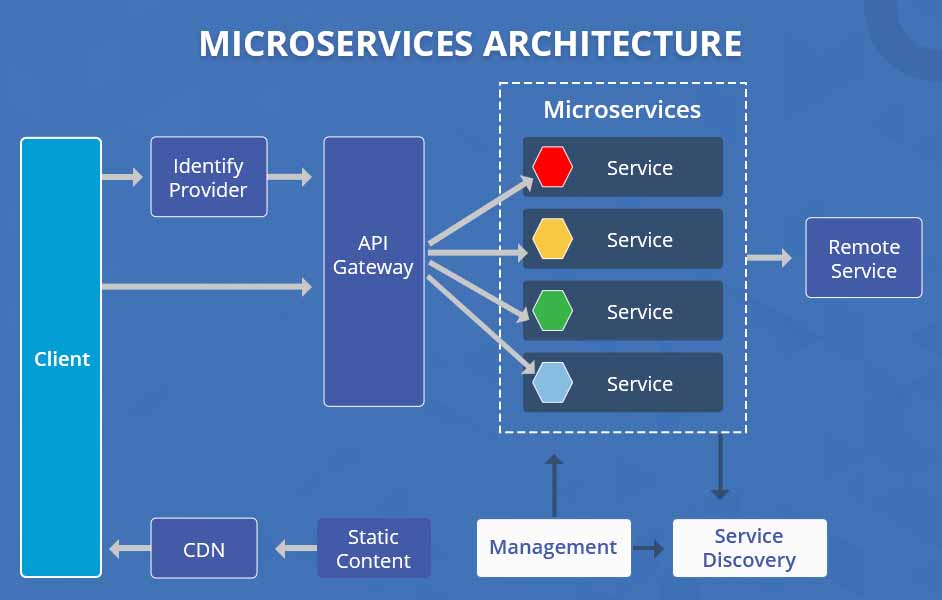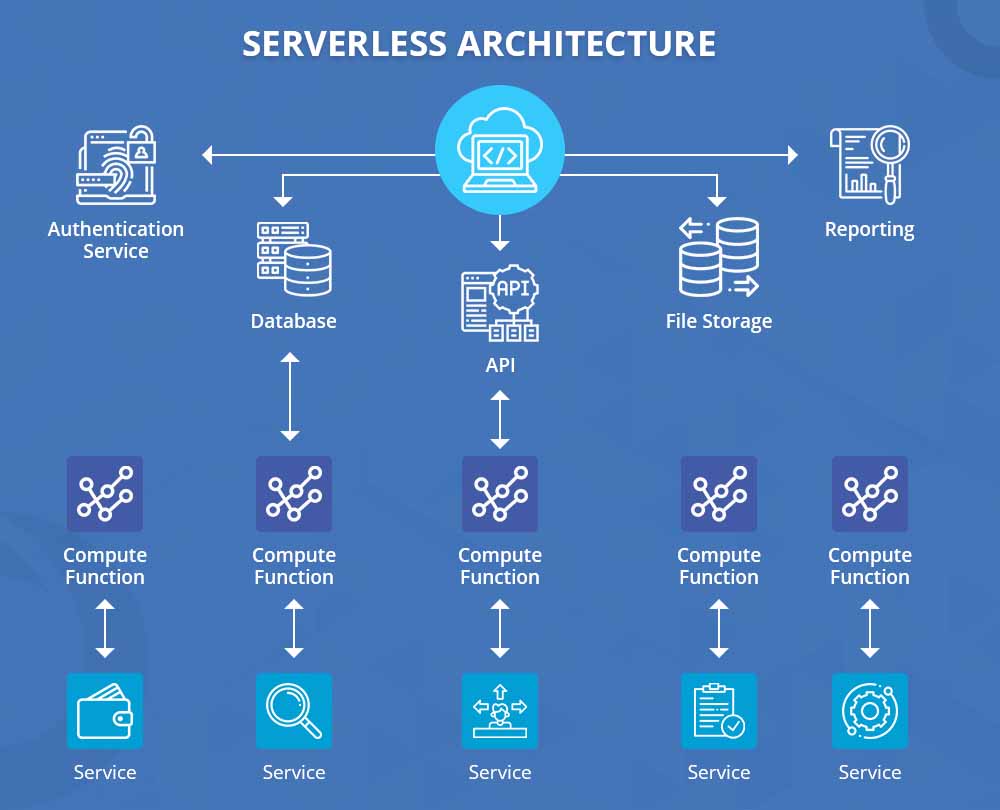Mobile App Development | 18 Mar 2022 | 9 min
Microservices vs Serverless: How to choose the best for your business

Like any other technology, both Microservices and Serverless are a response to a particular problem, one that started with traditional application building. Initially, there was only one architecture i.e., Monolithic Architecture that was used for building applications. But as businesses scaled up this architecture turned out to be unscalable. Monolithic applications became less adaptable and needed intensive resources, thus making them more expensive as the technical overheads increased exponentially.
To deal with this problem, businesses needed architecture that would be agile, cost effective and scalable yet efficient. All these requirements gave birth to two new architectural approaches: Microservices and Serverless.
Let us now talk about these architectures in detail.
The term Microservices itself refers to an architectural style in which applications are split into small services. It is a decentralized architecture pattern where the application is broken down into a smaller series of independent functions which communicate through APIs (Application Programming Interfaces). Each of the microservices has their own libraries, templates, database etc. and all of them are tested separately as well.

For example, consider our food apps which allow us to browse different restaurants, cuisines, dishes, add them to the cart and then finally complete our order. This type of application could be built using a series of microservices, such as:
• A front-end application interface that splits the entire application into small services.
• A search engine that looks up the databases of products built on queries for search generated from users.
• A service that provides product details and gives additional information about the dishes when the user clicks.
• A database that tracks the items that shoppers put in their cart.
• A payment gateway that manages the entire process of processing payments.
Again, this is just one example. The real-world scenario is quite different, where microservice apps are built using various methods. Such apps boost efficiency and stability through expanding the footprints of the application.

Working of Microservices
• Improves scalability by allowing easy addition, removal, and updation of individual microservices
• Enhances flexibility to change business logic and uses a wide range of technologies
• Reuses and adapts to multiple processes or different contexts
• Develops, tests, and deploys services independently without affecting other services or the parent application
• Removes faults within other larger applications easily
• Deems too slow and complicated for small companies who need quick implementation
• Proves to be complex owing to components being split
• Increases overheads because of multiple databases and their maintenance
• Increases vulnerability as microservices APIs are four times prone to security attacks
• Becomes expensive due to the need for expertise and computing resources
The term serverless implies that there is no server involved in building the application. But is this correct? No, it means that the company which is developing this application does not need to worry about the hardware involved. It need not invest in building or maintaining the server required and can rely on a third-party cloud provider for the same.
Serverless Model offers two different perspectives:
1. FaaS (Function-as-a-Service)
It is a flexible serverless model which allows the developer to run code module functions without being concerned about the back-end infrastructure and system requirements.
2. BaaS (Backend-as-a-Service)
This is a model where the entire backend of a system is handled independently, and it is offered as a service. Thus, it usually involves outsourcing backend services to a third party for maintenance and management which enables your business to focus only on developing the core functions.

Working of Serverless
• Focuses more on developing quality applications with quick deployment
• Suites specifically for real time and short-term processes that are client heavy and expected to grow
• Allows for easy and quick scalability
• Requires less time and resources to build, upgrade, and maintain the infrastructure
• Facilitates efficient budget projection for which there are multiple subscription-based pricing models available
• Mitigates costs in hiring different database and server experts
• Offloads responsibility and management of computing resources to a third party vendor
• Requires cold starts due to inactiveness of various applications and functions for a prolonged period
• Involves a long-term contract commitment with the third party
• Proves difficult to transition to another vendor due to the change in technology and business logic
• Brings in performance issues due to multi-tenant serverless platforms
Coming to the most important point of the discussion, which framework to choose?
There are many pros and cons of both microservices and serverless frameworks. To determine which framework to choose comes down to first analyzing your company’s business goals and product scope.
If there is a need for a large and complex application building Microservices would be the best option to choose and if cost effectiveness and quick deployment are important then serverless proves to be the best choice.
Reach out to us at Nitor Infotech to learn more about our services and look at our video for a better understanding of how to choose between Microservices and Serverless.

we'll keep you in the loop with everything that's trending in the tech world.
